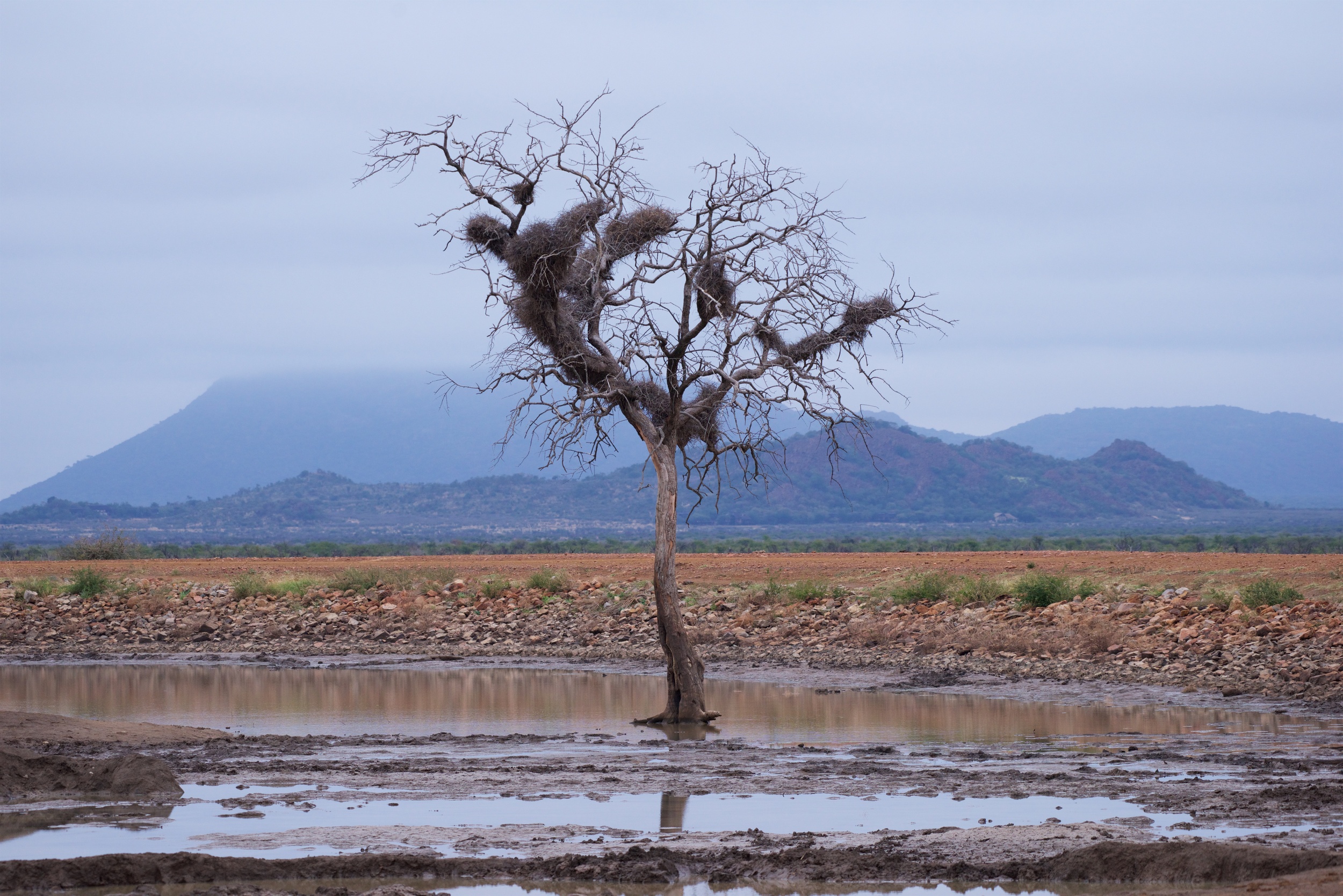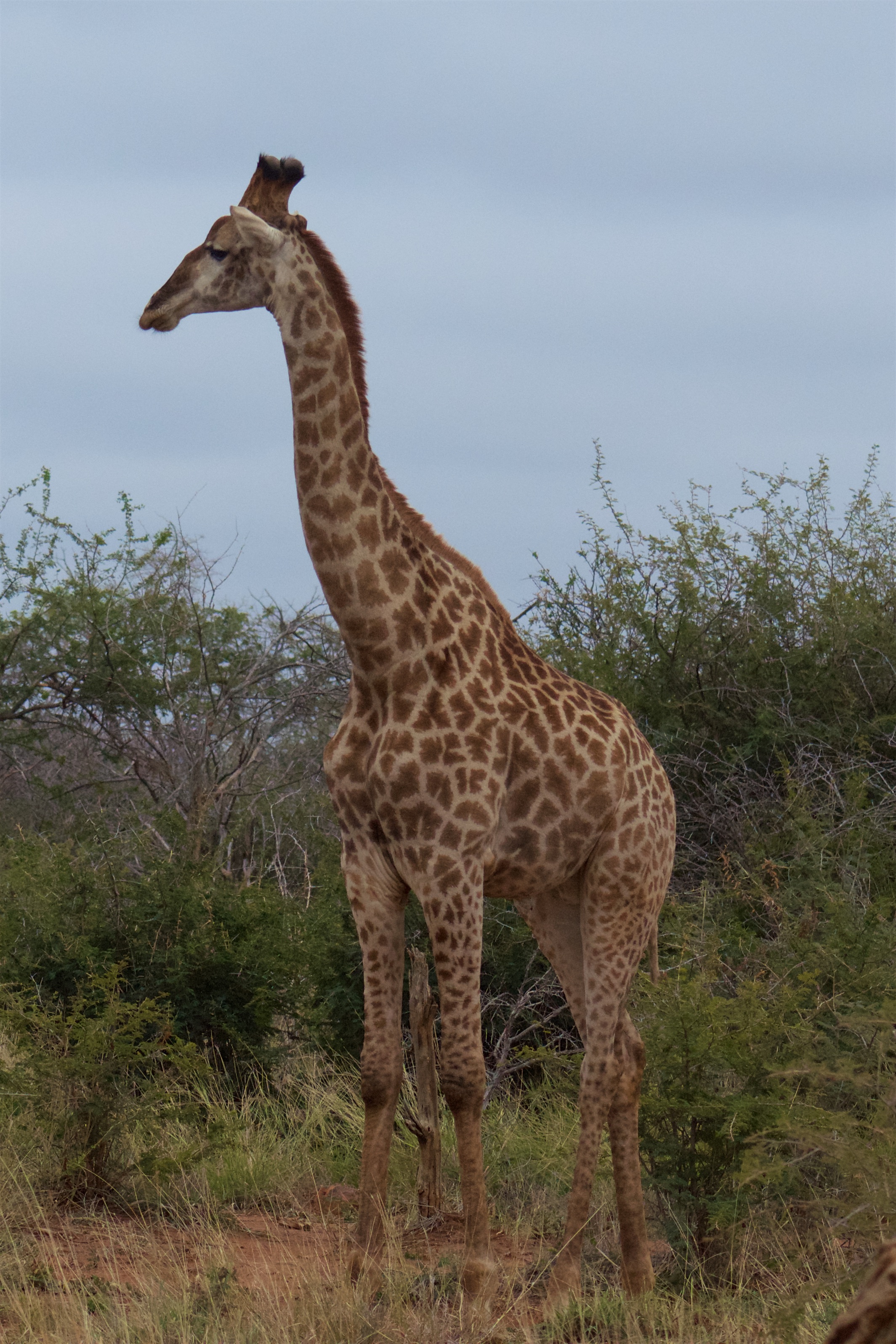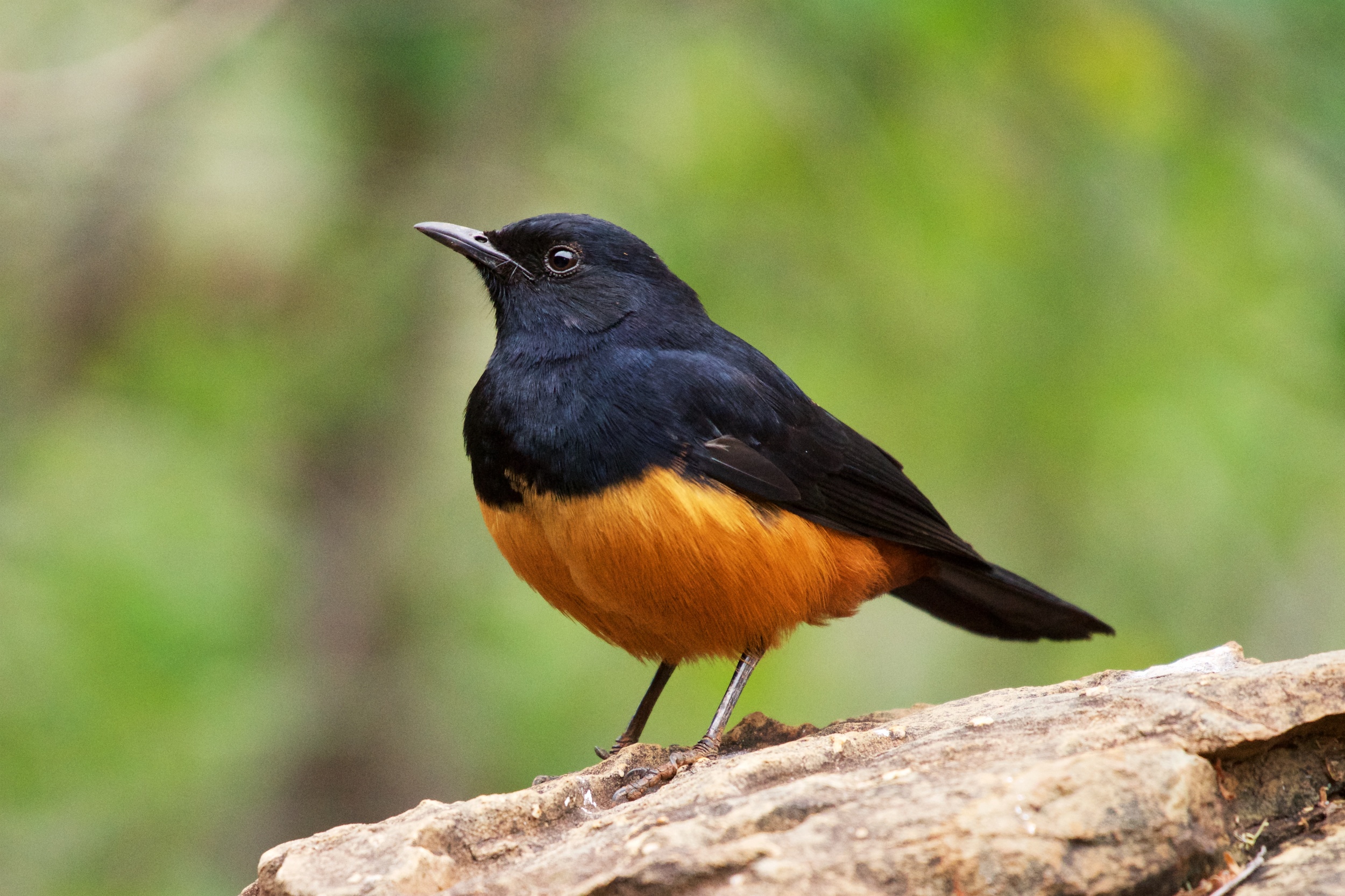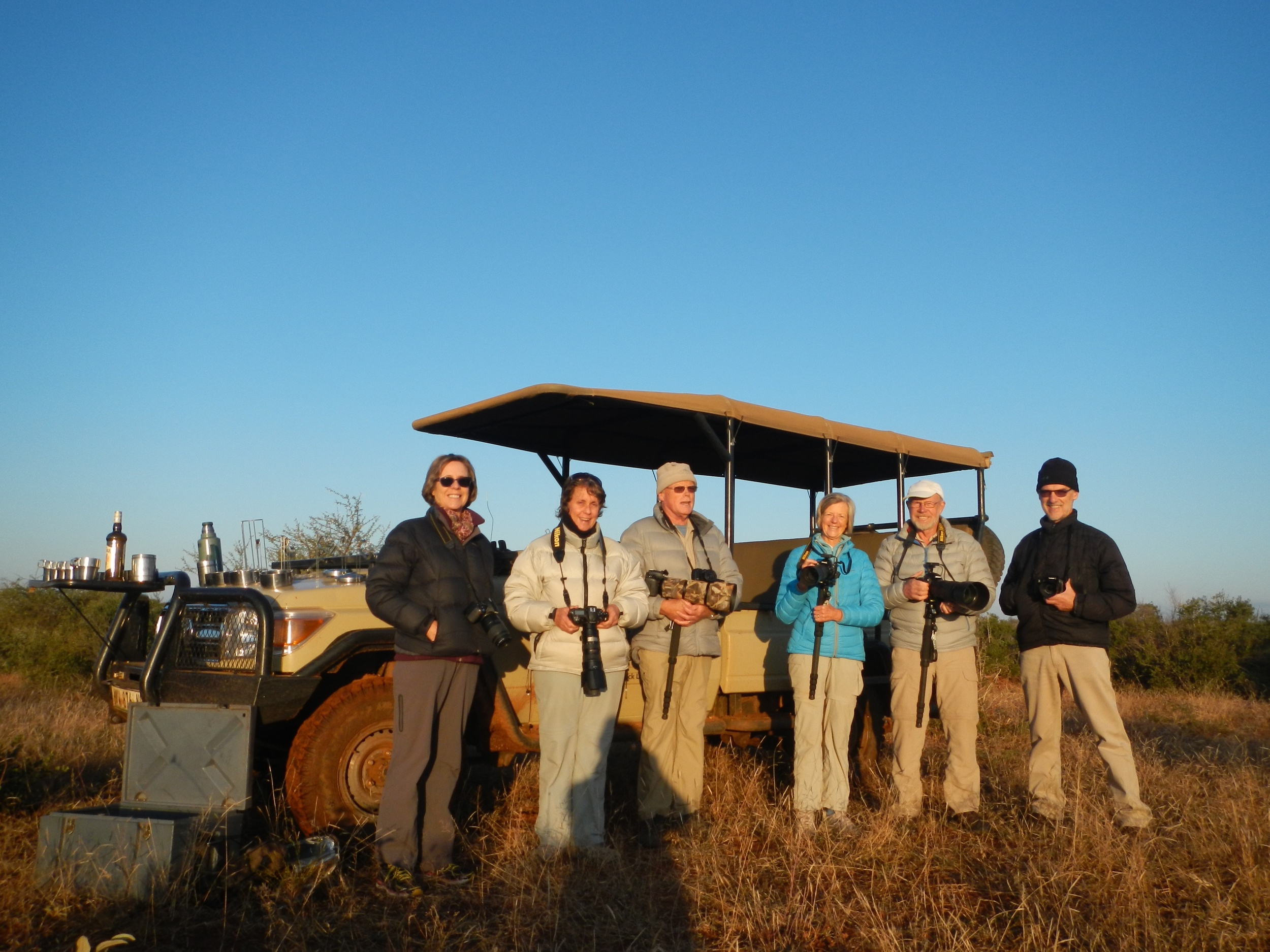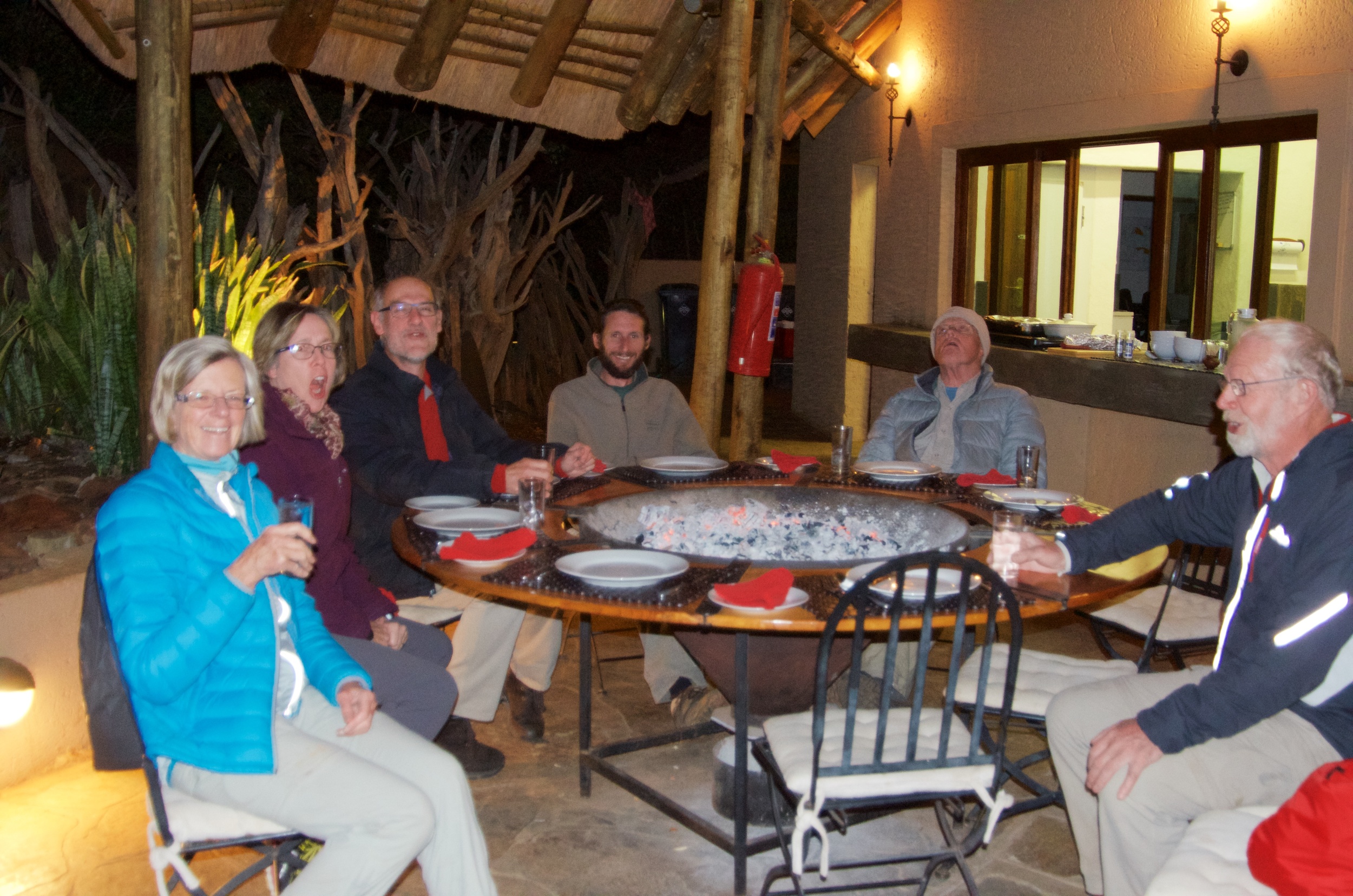The unexpected rain has ceased and in the morning we awoke to cold and cloudy conditions with a prognosis of warmer weather later in the day: hopefully!
The plan was to head west to an area about 10km from Leopards Rock to search for the famous and highly endangered African wild dog or painted wolf (Lycaon pictus). This meant travelling on wet and boggy tracks and in some places the 4WD was in low range with the dif-lock in operation. We eventually reached a point where Francois realised that to access the spot where the wild dogs were last seen was not going to be possible as the tracks to that section were impassable. We diverted from the westerly track just near the Inselberg Mountains which are rich deposits of iron ore.
Inselberg Mountains
The area we reached was typical of the acacia savannah that covers much of this region of South Africa. The vegetation is made up of exceedingly thorny, low scrubby acacia interspersed with taller trees. This ground cover provides good protection for animals from predators and adverse weather particularly in these cold conditions.
Despite the less than favourable conditions we did see several interesting bird species including an emerald wood hoopoe, lanner falcons, an African shell duck, African quail finches as well as black-throated canaries.
African shell duck
Black-throated canary
Guinea fowl
There was the usual abundance of grey-headed sparrows, guineafowl and doves including the less common namaqua dove.
We spent quite some time in close company of a journey of giraffes that included one half grown calf. When the calves are born the mother is standing upright and the calf has to tumble to the ground in order to ‘jump-start’ circulation and breathing. Without this tumble, the new-born is unlikely to survive!
Giraffe
We then encountered a procession of Burchell’s zebras moving along a track directly in front of the truck. This gave us a good opportunity to observe some of the differences between stallions and mares. The stallions are taller with thicker necks and narrower behinds. The distinctive markings on the upper front legs of the mare are visually imprinted in the baby foal’s brain soon after birth. This is so that the foal recognises its mother immediately within the herd as other zebras may kick and severely injure the foal if it attempts to drink from another mare.
Zebra
A large herd of buffaloes crossed the track in front of us but were not relaxed enough to wait around so we really only had a distant glimpse of these big beasts. The oldest bulls have horns that are so massive and extensive across the whole of the forehead that they look as if they’re wearing a helmet.
The various species of acacia bushes and trees that are commonly foraged upon by elephants and giraffes are able to release unpleasant tasting tannins when attacked. They also release volatile compounds that drift in the breeze to warn nearby bushes of potential predation. The giraffes have learnt to forage by continually moving upwind to overcome the plants’ self-protection strategy.
The word ‘acacia’ is derived from the Latin for ‘thorn’ suggesting that Australian acacias are botanically not acacias at all!?
Acacia leaves & thorns
Mocking cliff chat (male)
On returning to the Lodge for breakfast we managed to get photographs of both the male and female mocking cliff chat. These are beautiful black birds with strikingly bright orange breast feathers particularly in the male.
Squirrel
Rock dassile
Rockery, Leopard Rock Lodge
Just outside our accommodation unit we photographed a tree squirrel. These very common animals are so rapid in their near constant movement that one seldom gets enough time to take a photo.
On the big rocks behind the kitchen area it is possible to catch a fleeting glimpse of rock dassies. These small animals have a guinea pig-like appearance but surprisingly they are evolutionarily more closely linked to the elephant! Their incisors grow continually and become small tusks which are used for fighting. They have reputation for being grumpy possibly due to their tendency to grunt, scream and squeal when communicating.
Luckily for us the weather continued to improve and for our afternoon safari session we left Leopard Lodge in sunny and pleasantly mild conditions.
The direction we headed took us past the big dam and then we headed towards the airstrip and along the way we saw lots of bird life some species being first time sightings. The birds of note included lilac rollers, the incredibly shy red breasted shrikes, francolins, melba and fire finches, babblers and pied barbets. The melba finches were bathing in a puddle on the side of the road an allowed us to approach them without showing apparent fear.
Red-breasted shrike
We also encountered the same elephant and tiny calf that we’d seen yesterday. The baby elephant was practising using its trunk and seemed to be having trouble coordinating the action between having something in its trunk and moving it towards its mouth. An elephant’s trunk is an incredibly versatile organ involving over 100 000 muscles. It ends in two finger-like projections that give it the level of dexterity such that it could pick up an article as small as a pin. When drinking, an adult elephant can draw in nine litres of water which it then squirts into its mouth. The baby elephant drinks by directly grasping the mother’s nipple with its mouth. The mammary glands are between the mother’s front legs and the baby elephant has to get his trunk out of the way so as to be able to access the nipple. Elephants overcome the potential problem of overheating by using the huge surface area of their ears. The ears contain an intricate system of blood capillaries that bring blood close to the surface where it is cooled when they flap their ears.
Elephant & baby
Elephant & baby
Our photographic group
After sunset we heard the roars of two lions that were nearby. Francois drove off the track into the bush endeavouring to find the pair that had been sighted yesterday. Jamie was the first to see them and we then approached them carefully in the 4WD and just observed them for the next half hour or so.
Lion roaring
Lion
The lions’ deep roars are incredibly resonant and fantastically loud. The roars entail some very low frequencies that even made our truck vibrate. The two lions are thought to be brothers and they lay in the undergrowth about 50m apart and roared at each other as their mode of communicating their dominance to the surrounding world. At night fell they moved off and we followed them for some time until they entered undergrowth that was too dense for us to drive through.
With the spotlight on our way home we found two hyenas that were quite relaxed with our close proximity so we managed to keep contact with them for several minutes before they too moved on.
Back at the Lodge we had a barbecue prepared meal sitting around a large circular table with the one metre inner central circle being a hot wood fire.
Group enjoying barbecue meal
This was a delightful way of ending other fascinating day in the savannahs of South Africa.

